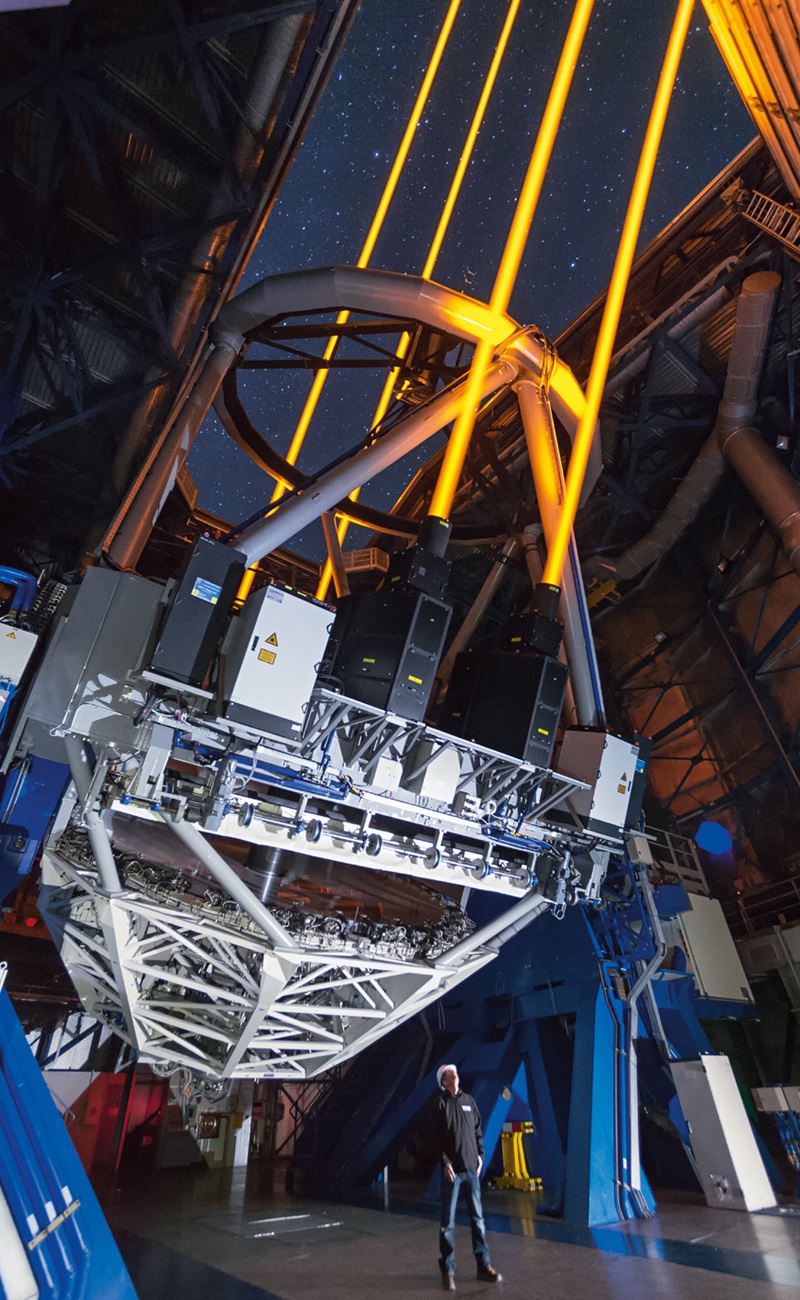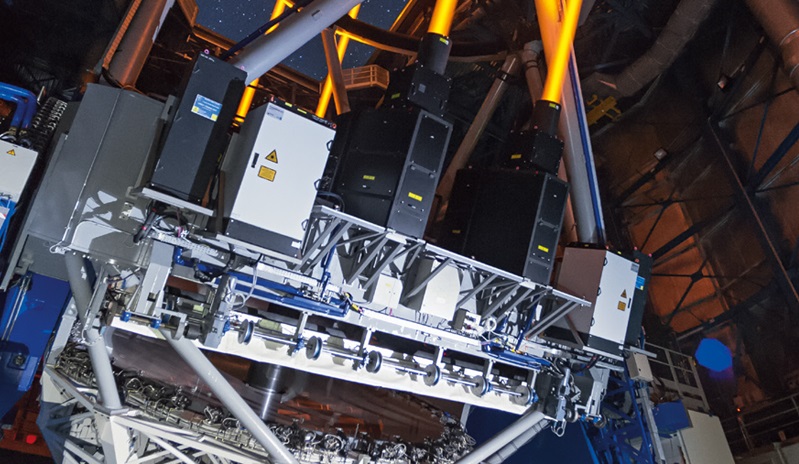August 21th, 2017
Munich – The Optical Society (OSA) announced on Aug. 18, 2017 that the Guide Star Alliance will be rewarded with the 2017 Paul F. Forman Team Engineering Excellence Award. Under contract of and in close collaboration with the European Southern Observatory (ESO), industrial partners, TOPTICA Photonics and MPB Communications (MPBC), joined together to develop a high-power CW tunable guide star laser system called the SodiumStar. The team’s development is now considered the quasi-standard for existing and planned telescopes around the world. The Guide Star Alliance will receive the award on Sept. 18, 2017 during “Frontiers in Optics (FiO) + Laser Science (LS)” in Washington DC (USA). Wilhelm Kaenders (TOPTICA), Wallace Clements (MPBC) and Daoping Wei (MPBC) will accept the award on behalf of the team.
“I have been highly impressed by the outstanding professionalism and expertise of the TOPTICA/MPBC team,” said Corinne Boyer, adaptive optics group leader of the “Thirty Meter Telescope” (USA). “The result is a ‘first class’ sodium laser now available for the entire adaptive optics community.”
Maxime Boccas, head of maintenance, support and engineering at the European Southern Observatory (Chile), described the laser as being “the greatest achievement in astronomic instrumentation of the last ten years.”
After seven years of development, the SodiumStar is now recognized as a core technology for the next generation of earth-based telescopes. It was already recognized with an innovation award of the Berthold Leibinger Foundation in 2016.

Four TOPTICA lasers in action at ESO’s Very Large Telescope in the Chilean Atacama desert.
(Picture: ESO)
The sodium laser system creates an artificial guide star that serves to measure and remove image blurring due to the earth’s atmosphere. The laser system has been optimized to provide efficient power conversion, wavelength stability, excellent beam quality and high photon return. Its generic Raman fiber amplifier technology (licensed from ESO) allows scaling of the single-frequency output power to highest levels while preserving the beam quality. Apart from basic astronomical research, this laser system will leverage ground-based approaches to space debris tracking and remediation using lasers as well as ground-to-satellite laser communications.
About the Award
The Paul F. Forman Team Engineering Excellence Award was established by The Optical Society in 1989 and has since been bestowed on dozens of outstanding researchers and engineers. Named in remembrance of Paul F. Forman, who, among many other accomplishments, effectively raised the visibility of optical engineering. This team award recognizes technical achievements such as product engineering, process, software and patent development, as well as contributions to society such as engineering education, publication and management, and furthering public appreciation of optical engineering. For more information on the award or the nomination process, visit OSA Awards.













